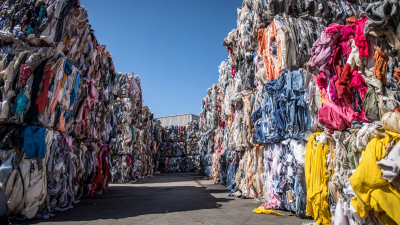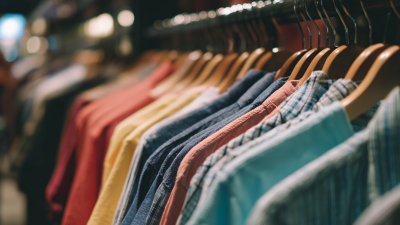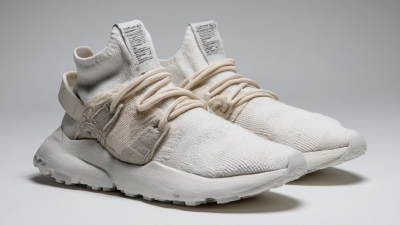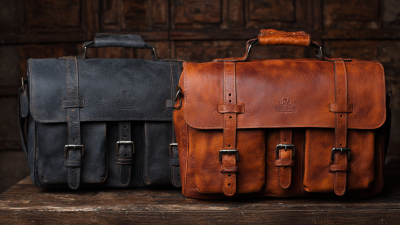Leave Your Message
In the ever-evolving fashion industry, the demand for sustainable and eco-friendly clothing alternatives has reached unprecedented heights, with the second-hand market experiencing a remarkable surge. According to a report by ThredUp, the resale market is projected to grow to $64 billion by 2024, signaling a shift in consumer behavior towards pre-owned apparel. Among the various options available, "Grade A Used Brand Clothes" have gained significant attention due to their quality and affordability. These garments not only offer fashion-conscious consumers premium brands at a fraction of their original price but also align with the growing trend of responsible consumption.
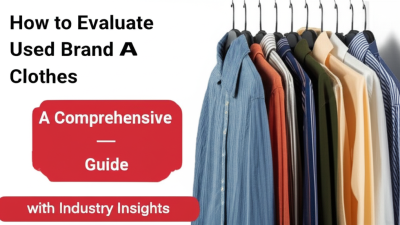
As the circular economy takes center stage, understanding how to identify and evaluate Grade A Used Brand Clothes becomes essential for both buyers and sellers. This comprehensive guide delves into the key factors to consider, providing crucial insights from industry experts to help navigate the world of second-hand luxury fashion effectively.
When discussing Grade A used brand clothes, it is essential to clarify what this classification entails. Grade A items are typically defined as pre-owned garments that exhibit minimal signs of wear, such as slight fading or negligible stitching flaws. These pieces retain their original design and functional appeal, making them highly desirable in the second-hand market. Buyers often seek Grade A clothing for its blend of quality and affordability, as they can acquire high-end brands at a fraction of the original purchase price.
Understanding the characteristics of Grade A used brand clothes also involves recognizing the importance of brand reputation and garment care. Items from well-known brands are usually crafted with better materials and craftsmanship, which contributes to their longevity. Additionally, how the previous owner maintained the clothing plays a significant role in its condition. For instance, garments that have been kept clean and stored properly are more likely to qualify as Grade A. This knowledge not only aids consumers in making informed purchasing decisions but also empowers sellers to accurately represent the quality of their offerings in a competitive market.
| Criteria | Description | Evaluation Scale |
|---|---|---|
| Material Quality | Inspect the fabric for durability, softness, and overall feel. | 1-10 (1: Poor, 10: Excellent) |
| Condition | Check for stains, tears, or any signs of wear and tear. | 1-10 (1: Damaged, 10: Like New) |
| Brand Value | Consider the reputation and demand for the brand. | 1-10 (1: Low Demand, 10: High Demand) |
| Style & Trendiness | Assess whether the item is still in style or relevant to current trends. | 1-10 (1: Outdated, 10: Trendy) |
| Authenticity | Confirm that the item is genuine and not a counterfeit. | 1-10 (1: Fake, 10: Authentic) |
| Resale Value | Estimate potential resale value based on current market trends. | 1-10 (1: Low Resale, 10: High Resale) |
When evaluating Grade A used brand clothes, it’s essential to recognize key characteristics that indicate quality. According to a recent report from ThredUp, the second-hand clothing market is projected to reach $64 billion by 2024, highlighting the increasing demand for quality pre-owned fashion. Look for pieces that exhibit minimal wear, with intact seams and vibrant colors, as these are signs of robust craftsmanship.
Tips: Always check the fabric content; natural fibers like cotton, wool, and silk typically offer better durability and comfort than synthetic fibers. Additionally, explore the brand’s reputation—renowned brands often invest in superior manufacturing quality, which reflects in their longevity even in second-hand items.
In assessing pre-owned fashion, focus on specific details such as lining, stitching, and closures. A well-constructed garment with quality zippers or buttons is a reliable indicator of overall durability. According to a study by McKinsey & Company, sustainable fashion is gaining traction, with consumers increasingly seeking transparency regarding production practices, which further emphasizes the need to prioritize quality over quantity in second-hand shopping.
When evaluating Grade A used brand clothes, having the right tools and techniques at your disposal can significantly streamline the assessment process.
One essential tool is a magnifying glass, which allows you to closely inspect fabric quality, stitching, and potential defects. A good lighting setup is equally important, as it helps reveal the true colors and any imperfections that might be hidden in poor lighting. Having a measuring tape handy can assist in checking sizes accurately, ensuring that you can provide potential buyers with precise dimensions.
Tips for evaluating used clothing include checking the care label for fabric composition and washing instructions, as this can give insight into the garment's longevity. Additionally, familiarizing yourself with the brand’s typical quality standards can help you spot discrepancies that may indicate a counterfeit product. Lastly, taking note of the garment's overall condition, including any signs of wear and tear, will aid in determining whether it truly qualifies as Grade A. By utilizing these essential tools and techniques, you can confidently assess used clothing and make informed decisions for your wardrobe or resale efforts.
The second-hand apparel market has witnessed remarkable growth in recent years, driven by shifting consumer attitudes toward sustainability and fashion. Grade A used brand clothes—those that are nearly new or in excellent condition—are becoming increasingly sought after for both their quality and affordability. Industry insights reveal that the demand for these high-quality second-hand items is fueled by younger shoppers who prioritize eco-friendly and economically responsible choices. This trend not only reduces waste but also supports a circular economy, making Grade A apparel a compelling option for both consumers and retailers.
Moreover, market analysis shows that the resale value of Grade A garments tends to retain its worth better than fast fashion counterparts. Brands that emphasize sustainability in their production processes often influence resellers' pricing strategies, creating premium markets for well-maintained second-hand clothes. As consumer awareness grows, companies are encouraged to engage in transparent practices, leading to a more lucrative environment for Grade A used apparel. By embracing this paradigm shift, businesses tap into a vibrant market, aligning themselves with modern consumer values while also increasing profitability.
When navigating the world of Grade A used brand clothes, informed purchasing is crucial to avoid common pitfalls. According to a recent ThredUp report, the secondhand apparel market is projected to reach $64 billion by 2024, reflecting a growing consumer demand for sustainable fashion. As shoppers increasingly turn to vintage and pre-owned items, it’s essential to know how to assess the quality and authenticity of these products before committing to a purchase.
One effective strategy is to scrutinize clothing labels and tags for signs of authenticity, which can include brand logos, manufacturing locations, and care instructions. Research from the Council of Fashion Designers of America indicates that about 30% of luxury items sold online are counterfeit, making attention to detail paramount. Moreover, leveraging platform reviews and seller ratings can provide valuable insights into the seller's reputation. When buying from online marketplaces, look for sellers who offer detailed photos and descriptions of their items, as this transparency typically indicates a trustworthy source. By equipping yourself with these evaluation techniques and data-driven insights, you can confidently invest in Grade A used clothing while minimizing the risk of subpar purchases.

